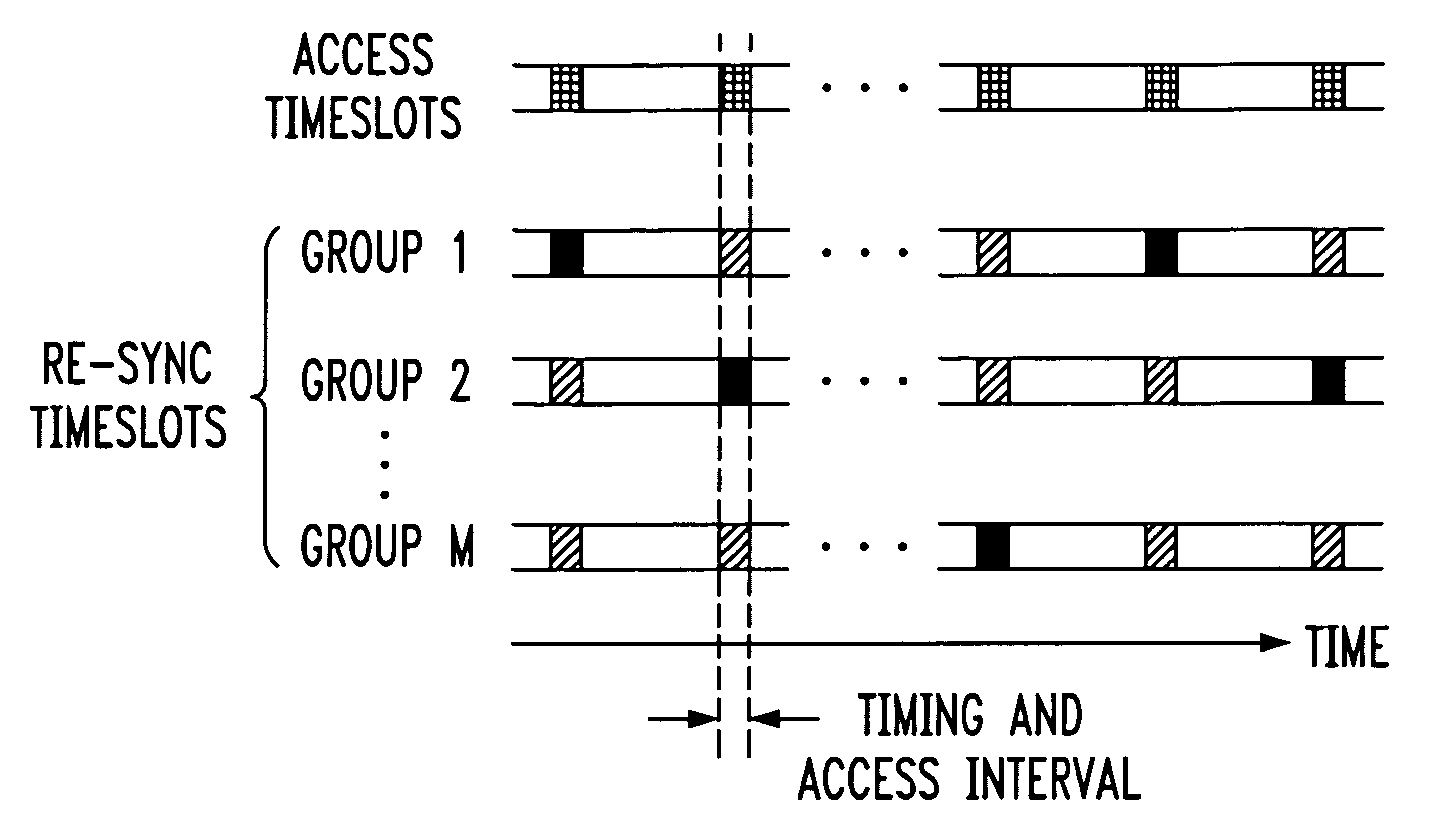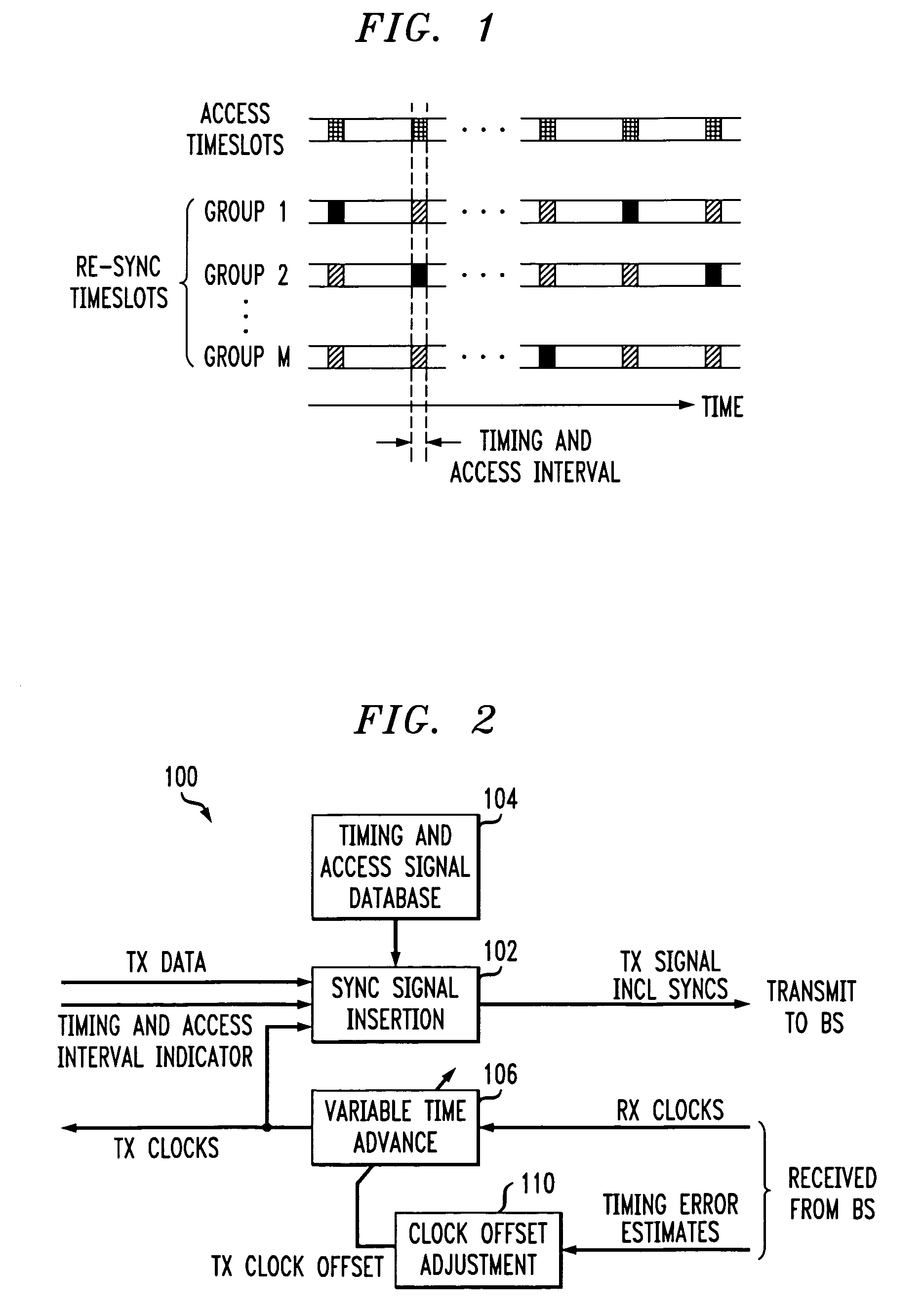Uplink timing synchronization and access control for a multi-access wireless communication system
- Summary
- Abstract
- Description
- Claims
- Application Information
AI Technical Summary
Benefits of technology
Problems solved by technology
Method used
Image
Examples
Embodiment Construction
[0017]The present invention will be illustrated below in conjunction with an exemplary multiple access wireless communication system based on orthogonal frequency division multiplexing (OFDM). It should be understood, however, that the invention is not limited to use with any particular type of wireless communication system.
[0018]Signal construction, detection and estimation techniques suitable for use in conjunction with the present invention are described in the above-cited U.S. patent application Ser. No. 09 / 503,041.
Timing and Access Intervals
[0019]In accordance with the invention, mobiles transmit certain pre-specified, wideband timing and access signals in designated timing and access intervals. The timing and access intervals occur regularly within an uplink data stream, and all uplink data transmission is suspended during these intervals.
[0020]The timing and access intervals are dedicated in the sense that regular uplink data transmission is suspended in the intervals. The us...
PUM
 Login to View More
Login to View More Abstract
Description
Claims
Application Information
 Login to View More
Login to View More - R&D
- Intellectual Property
- Life Sciences
- Materials
- Tech Scout
- Unparalleled Data Quality
- Higher Quality Content
- 60% Fewer Hallucinations
Browse by: Latest US Patents, China's latest patents, Technical Efficacy Thesaurus, Application Domain, Technology Topic, Popular Technical Reports.
© 2025 PatSnap. All rights reserved.Legal|Privacy policy|Modern Slavery Act Transparency Statement|Sitemap|About US| Contact US: help@patsnap.com



